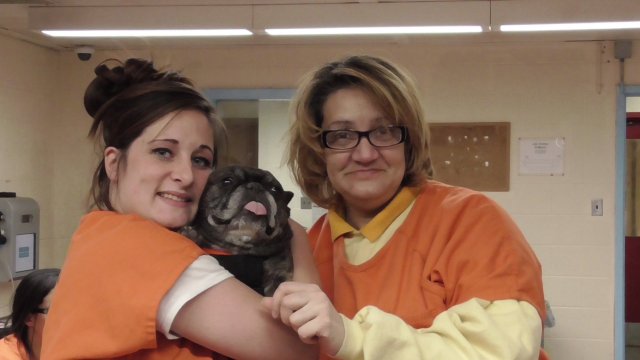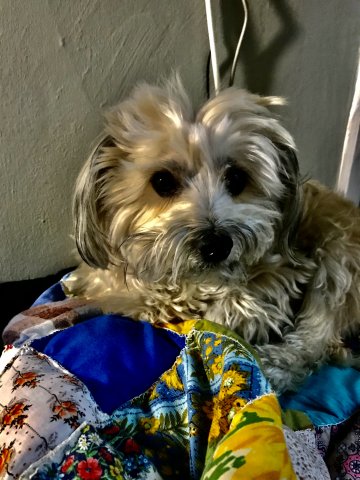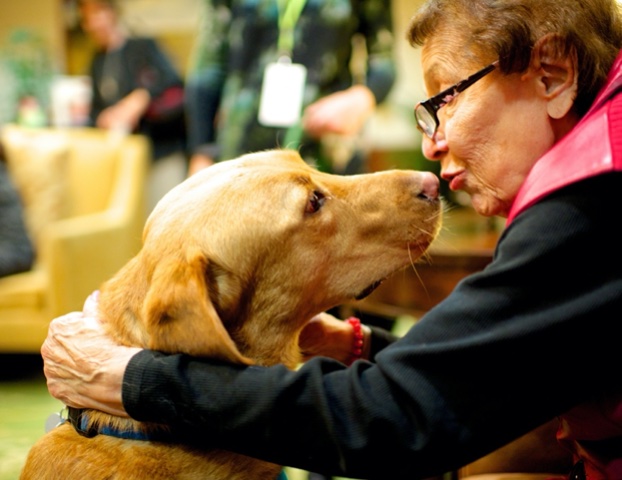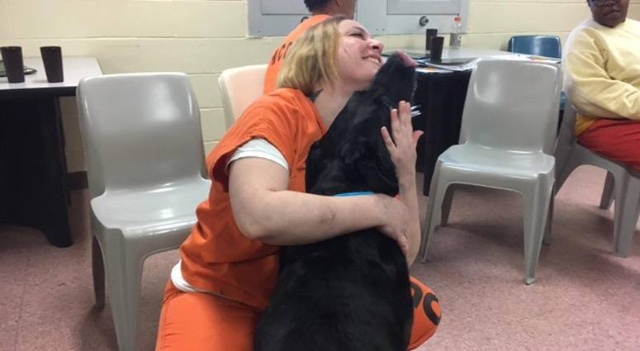Good Dog Foundation Provides Helping Dogs
Berkshires Benefit from Canines
By: Jessica Robinson - Aug 03, 2020
The Good Dog Foundation: Helping Humans Heal
For more than 30,000 years dogs have been providing companionship and loyalty to humans. No wonder they are called ‘man’s best friend.’ Both dogs and humans are social creatures, so the relationship is mutually beneficial, each nurturing the other.
I, for one, understand the benefits of the human/animal bond, having had Henry, my Morkie, for four and a half years. Henry is a good dog, but not yet a qualified Good Dog.
Rachel McPherson understood them too. In 1998 she launched The Good Dog Foundation with a single mission: to bring the symbiotic relationship between dog and man into the world of healing.
I had learned about the organization through my friend Bruce Fagin, their Executive Vice President. In 2017 Henry and I, along with Diana Wege and her dog Minnie, attended a Good Dog Foundation gala at Guastavino’s in New York. The invite was for both humans and canine guests. Imagine what it’s like to attend a sit-down dinner for 300 well-dressed, well-heeled humans with their dogs, of all sizes, in tow!
That evening the Good Dog Foundation introduced a study they were conducting in partnership with Pace University called Parenting, Prison and Pups. The goal of the program was to prove that Animal-Assisted Therapy can help women prisoners healthfully reunite with their children, become better parents, and stay out of jail.
What I learned that night is that approximately seventy percent of female inmates are responsible for a minor child. Incarceration disrupts the mother-child bond. This negatively impacts roughly 1.7 million children nationally.
Parenting, Prison and Pups is a skills training program designed to help inmate mothers become better parents. Specially trained therapy dog teams are used as a tool for creating a safe environment to help reduce anxiety and stress. This allows the women to feel more comfortable when discussing their trauma-based feelings.
At the same time, the dogs provide a safe environment for their children during in-prison visits. Here’s what some of the participating inmates said:
“When you look in the face of a puppy, that’s it right there, you melt like butter.. ….. these women have that to look forward to, and not worry about the cares of the world,” said Rita “Sunshine” Brooks, HIV/AIDS and substance abuse case manager and former inmate.
“It wasn’t just a regular parenting class, it was more than that. It felt so good and it made me feel so good as a person” (Prisoner Mom, Westchester County Dept. of Corrections)
“This class opened us up in ways that we normally wouldn’t. People were more responsive. There were many benefits. For me, personally, it was a benefit for me to think of myself as a mom and the methods I utilized.” (Prisoner Mom, Metropolitan Correction Center).
A major area of the Foundation is the Volunteer Services program. That’s how you and your pet become a Certified Therapy Dog Team. Good Dog trains and certifies hundreds of volunteer dog teams each year. These teams log some 30,000 hour-long therapy dog visits.
So, how do you turn your pet into a Certified Good Dog? The dog can be any size and any breed, but must be housebroken and have a friendly, out-going, non-aggressive temperament. Applicants are first screened online, then they must pass in-person evaluation for admission to a Good Dog Team six-hour, four-session Therapy Skills class. Your dog must be able to learn basic skills like ‘down,’ ‘sit,’ ‘stay’ and so forth. Henry, unfortunately, doesn’t make the cut. He has yet to master the word, ‘no.’
Yes, it takes effort and commitment for a pet to become a Certified Good Dog. These healers are extraordinary dogs, and their owners are pretty extraordinary too. They are held to the highest standard, and must be re-certified each year.
Once a dog is certified, Good Dog trainers and staff set up the emotional support visits with patients in hospitals, nursing homes, trauma centers, schools and more. Each visit lasts one hour. Bruce Fagin explains: “The reason is to protect the dog. It's actually an amazing thing: The human handler member of the team consistently reports that when they're home getting ready for a therapy dog visit, and they put the Good Dog vest or bandana on their dog - the dog invariably knows it's ‘going to work’ and gets excited about it. The dogs on a visit to hospitals really seem to put their all into BEING WITH individuals they visit. So, they can get fatigued after an hour."
A case I was especially drawn to was Pablo Patino, an eight-year old boy with congestive heart failure. His enlarged heart was deteriorating – fast. While in Mt. Sinai Hospital waiting for a transplant he was introduced to Ralph, an emotional support dog.
Pablo received his new heart, but after surgery doctors said he needed more than just modern medicine. Pablo didn’t want to get out of bed. He complained that his leg hurt. That’s when Ralph really stepped up to the plate and became part of his life. Pablo quickly forgot about the pain and was able to get back on his feet. What was it about Ralph that helped Pablo? “He made me feel better. He made me do exercises. Like walking.” Today, thanks to Ralph’s help, Pablo is home and doing well with his new heart.
Because Pablo missed Ralph so much, Mt. Sinai arranged for the two to re-unite a few months after returning home. “I said to myself, Ralph is here. I am so excited to play with him, and touch him and feed him,” exclaimed Pablo
It’s not only children who are excited to see and touch these dogs. When a friend of mine heard I was writing this story she told me about the cancer surgery she had at Memorial Sloan Kettering. When the hospital asked if she’d like a Good Dog visit, she immediately said yes. The next morning they told her she could go home. Home? But where was the dog? She had looked forward, desperately, to hugging the dog, who had not yet arrived.
Good Dog Teams also visit universities like the Julliard School. “There is a sense of joy and happiness that comes with bringing the dogs to campus. This is one of the moments when our students are authentically happy,” explains Gianna Pannullo, Assistant Director of Julliard’s Student Affairs.
Do the students agree? “One of the hardest parts of being away from home is being away from my dogs, and the Good Dogs help to combat some of that homesickness,” says a Julliard student.
“These events are the highlight of my semester. They make me feel so much better when I'm feeling stressed out or depressed,” says another Julliard student.
To some extent it could be considered ironic that when Rachel McPherson founded the organization the world was in the midst of another health crisis, AIDS. “ My hope then, as now, was to use human-animal interaction to bring comfort to those suffering. This crisis is different because, to keep our therapy dog teams, and those they serve, safe, we had to temporarily suspend our visits,” says McPherson.
For the moment there are no more therapy dogs for people in need to hold, pet, hug, touch.
Covid’s forced pause forced the Foundation to reset and rethink. “We immediately developed a virtual visit protocol, and there have been a number of facility partners who have found them useful,” says Fagin.
“Additionally, we are in the early stages of developing an online reading practice program for kids where each child is assigned to a therapy dog team for one-on-one reading. Kids love to read to dogs - they don't feel judged.”
For all the heartbreak and upheaval that Covid has brought, animal shelters have seen an unprecedented spike in adoptions and fostering. Certain companionship for uncertain times.
As people spend more time at home the adoption rate continues to spike. Good for dogs. But bad for the Good Dog Foundation which, in addition to suspending all of their in-person therapy dog visits and all in-person training classes, has seen half of its revenue wiped out for the fiscal year.
These Covid days are no longer filled with belly rubs and wagging tails. Even the dogs agree, none of this makes a lick of sense. I love the work the Good Dog Foundation does. I hate what Covid’s done.






